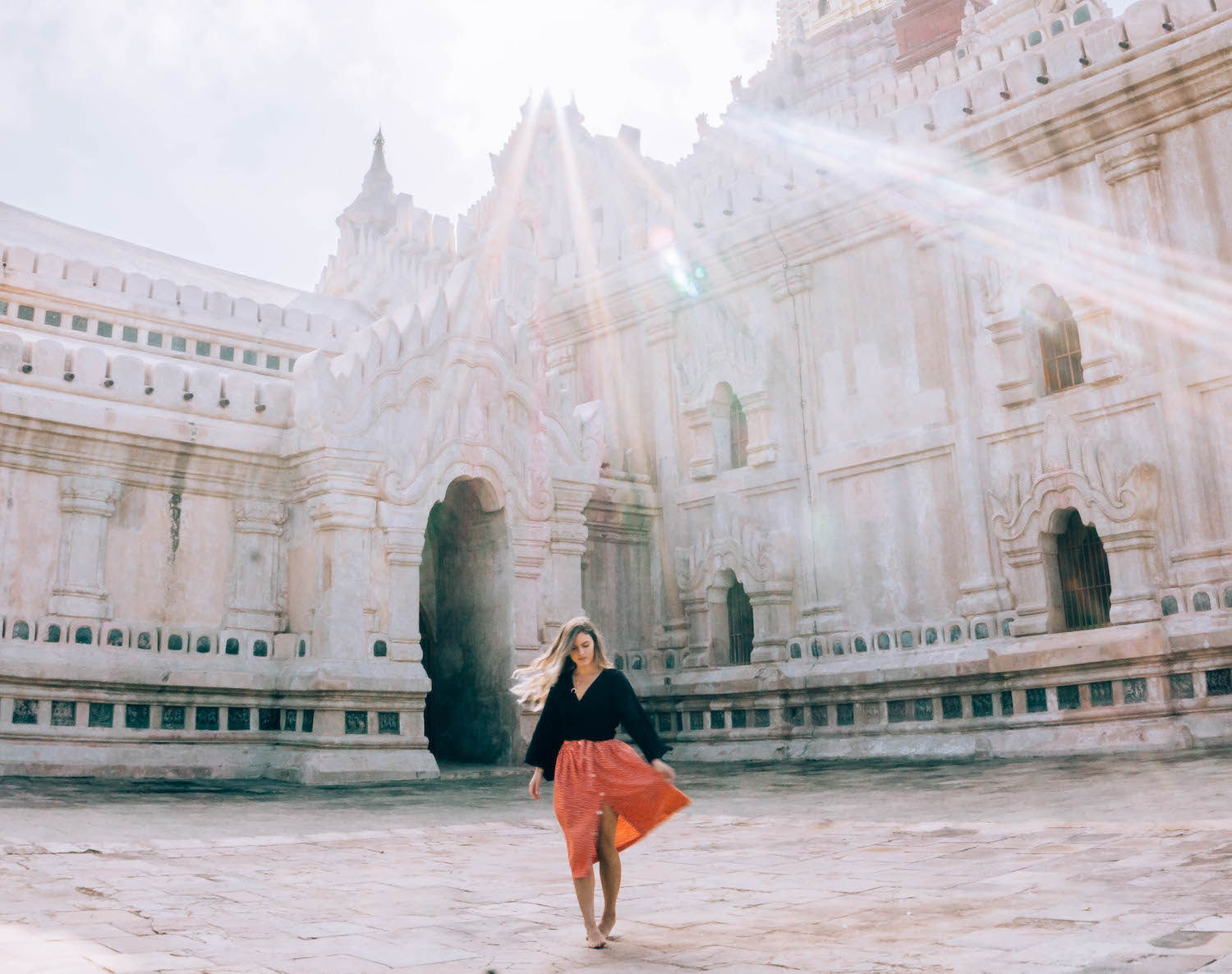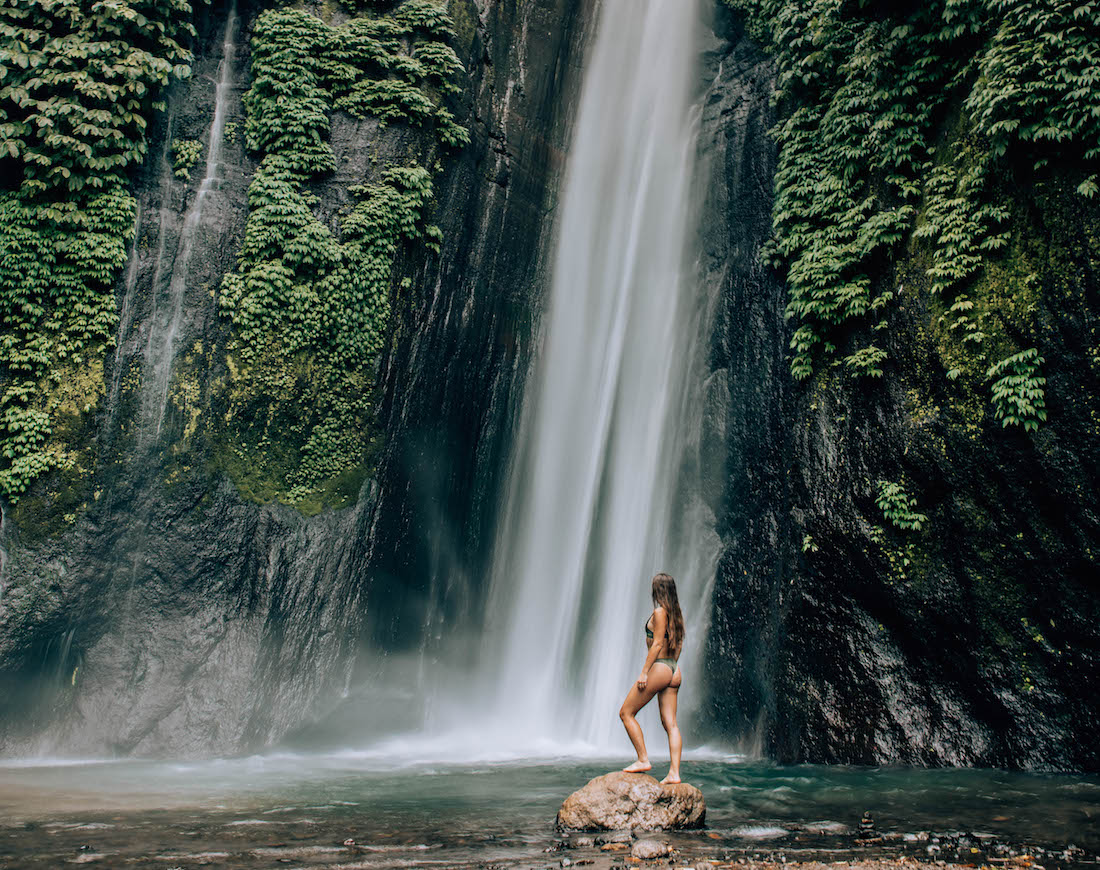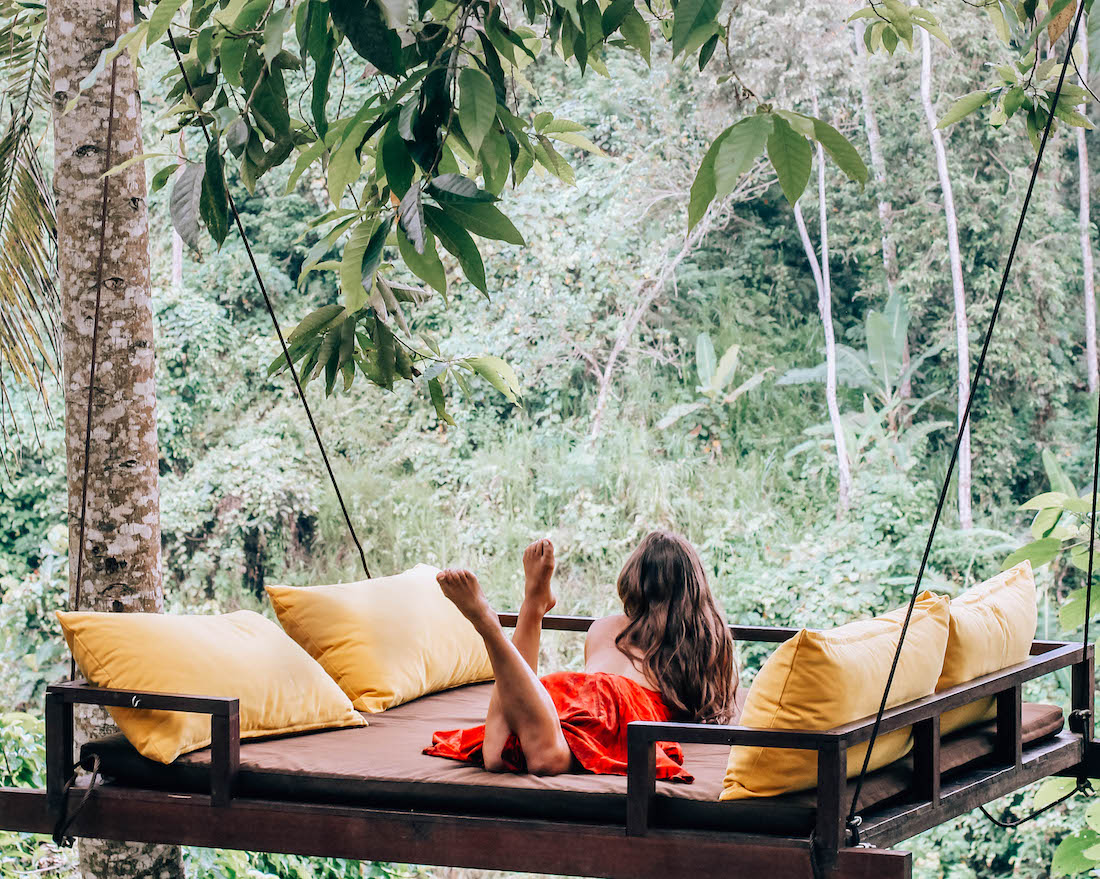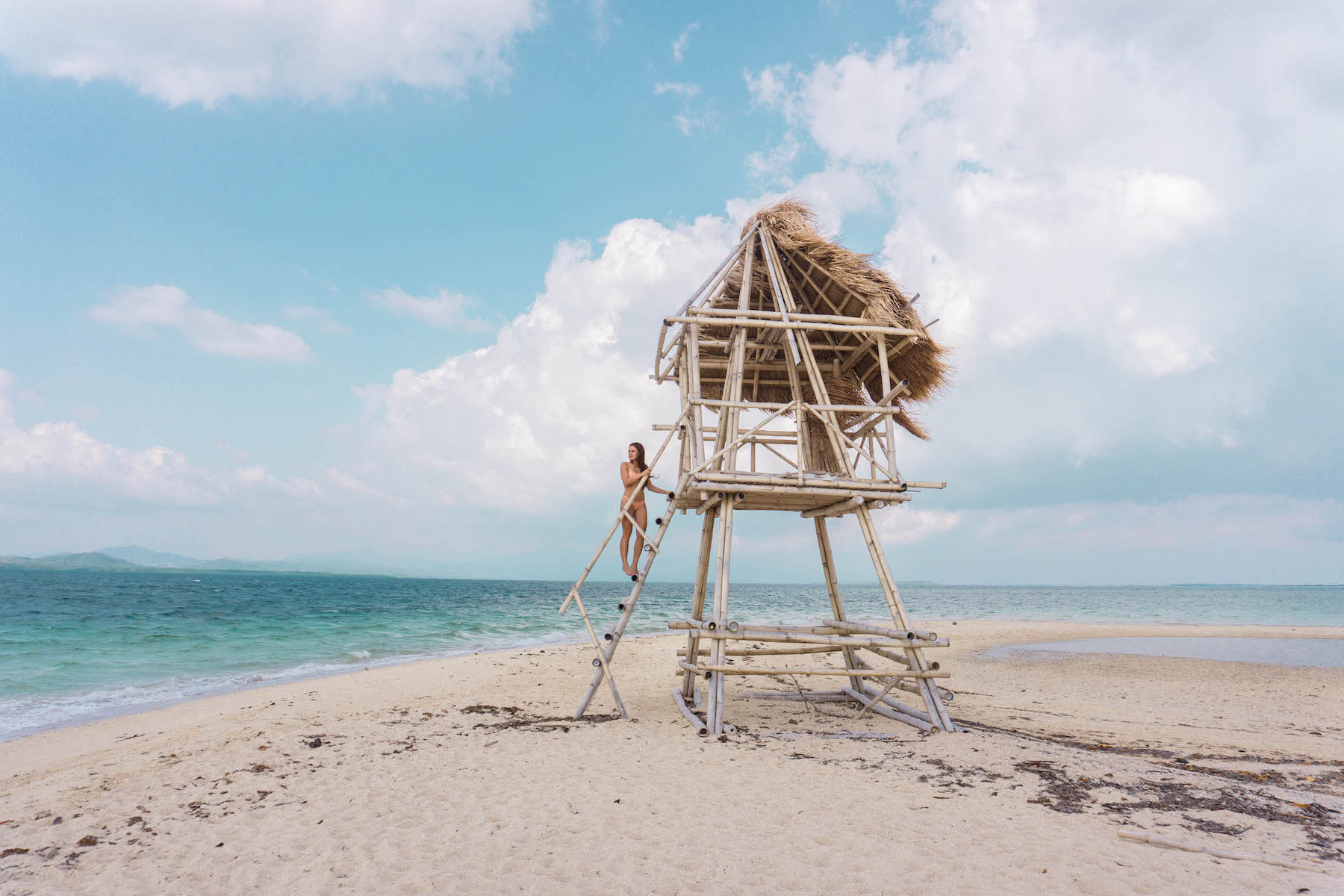8 Reasons Why Rainy Season Is The Best Time To Travel
What’s one of the first things most people do when planning a trip to a new destination? Usually, it’s to Google: “Best time to visit [fill in the blank].”
Although it’s good to get a sense of climate before booking a flight, you might be missing out if you only travel places during their peak seasons. In fact, when visiting countries with rainy seasons, I’ll often go out of my way to avoid the “dry” high season. Rainy season is where the magic is at, my friends. From the best landscapes to finding the lowest prices, here’s why rainy season is the best time to travel, and some tips to make it work.
When heading to tropical destinations, I now almost exclusively travel during rainy season. If you ask me, it’s the best time to travel. And although it’s true that the weather will be hotter, more humid, and (maybe) rainy, I’ve generally found that conditions aren’t nearly as bad as most people would think — or as the weather report says. From my experience, the benefits far outweigh the weather setbacks, and I recommend rainy season travel for these eight reasons.
1) Avoid the crowds.
Nothing will damper a beautiful moment quite like having to share it with giant crowds of pushy, selfie-stick-wielding tourists. So, even if the weather is perfect during peak season, it may not necessarily mean a better experience overall. In Bali, the difference may be swimming in a waterfall with seven people rather than 70; in Myanmar, the difference may be enjoying a sunset from a temple rooftop alone rather than having to fight for good views or a proper photo. You’ll have a more intimate and peaceful experience at some of the world’s most famous landmarks, which is a pretty good tradeoff for warmer weather.
TIP: Sunrises are always the best way to ensure the most privacy, during any season. Everyone loves a good sunset, but few are willing to wake up early in the morning to get somewhere while it’s still dark.
2) Save money.
Many hotels, tours, and activities will have different rates for high and low seasons. If you travel during peak tourist season, expect to pay a premium for most things along the way. But low seasons mean low demand, so you’ll easily get the lowest rates, from accommodations to flights and everything in between! As an extreme example, when I trekked during rainy season in Nepal, almost all my accommodations were discounted 100% (yes, meaning they were free) so long as I agreed to purchase meals.
TIP: Even if you don’t find a “low season” rate listed, it never hurts to inquire — when tourism is low, most companies will be willing to offer a discount if you simply ask.
3) Prettiest landscapes.
Many governments around the world are making an attempt to “re-brand” their rainy seasons as “green season.” And for good reason. Seasons of rain bring out the the most beautiful scenery: trees are greener, more flowers are in bloom, lakes and waterfalls are most alive. From my experience, rainy season is the best time to travel if you’re looking for the most breathtaking displays of tropical scenery. Even if there’s a little rain or mist, I find that that only adds to the magic and really brings out the colors of nature.
TIP: My recommendation is to visit toward the end of rainy season, when everything is in its fullest bloom! At the beginning and even middle of the season, trees might still be bare and flowers may not yet have bloomed. There’s usually about a two-week “transition” time before dry season begins when you’ll probably avoid most of the rain while also avoiding most of the tourists.
4) Upgrades.
With fewer tourists comes greater availability, and many hotels are eager to draw in more tourists. If the suite is going to go empty anyway, it’s usually no problem for the hotel to upgrade guests if it means a better review on TripAdvisor, more publicity on Instagram, or more word-of-mouth recommendations. In Myanmar, I was immediately upgraded from a standard room to a Lakeview suite upon arrival at a hotel I booked last-minute, and was told occupancy was low which made that possible.
TIP: If you do get upgraded and have a great experience, definitely leave a good review! It’ll only make the hotel more likely to upgrade again in the future. You can also check reviews to see if the hotel has a standard practice of upgrading people.
5) The weather report lies.
After booking my flight to Costa Rica in August, I looked at the weather report and panicked: rain all day every day?! To make matters worse, the weather report even said its predictions were 100% certain. But ultimately, it rained once while I was in Costa Rice, and only for a couple of hours. Often you’ll find that during wet seasons, it’ll only rain for a few hours in the morning or at night, and be clear most (or all) of the rest of the day. I recommend ignoring the day-by-day weather reports altogether when traveling to tropical places during rainy seasons. They’re often showing you misrepresented data or, more likely, are just blanketed reports used during rainy season without support from any actual weather data.
TIP: Read forums instead of the weather report. Try plugging your destination and time of visit into Google, and see what others have had to say about the weather based on their own personal experiences. As a back up, bring extra books, and book a hotel with cozy spaces to pass some time if need be, or with activities like a gym or spa.
6) Great lighting for photos.
Although your first instinct might be to think a blue and sunny skies make for the best photos, this often isn’t the case. In fact, as I mentioned before, you might get a lot more sunny days than you expect. But even if you don’t, this can work in your favor.
Bright sunlight can lead to overexposed and blown out photos with harsh shadows. Often these conditions can distract from the beauty of a landscape or the details in impressive architecture. Rather, shooting with cloudy skies makes lighting more even and soothing, improves the appearance of skin complexion, and brings out the vibrant colors and intricate details that get lost under the bright sun. Often when I’m shooting outside during the day, I’ll wait until, the sun disappears behind a cloud — this is much easier during rainy season when clouds are plentiful!
TIP: If you feel like your cloudy sky photos are lacking a bit of the oomph of those blue sky shots, trying increasing the contrast, clarity, and vibrance on an editing platform. If you use Lightroom, increase the saturation on the blues to draw out color in the sky and water when those areas seem a bit dull.
7) Freedom to be flexible.
For those of you who love to pre-plan vacations a year in advance, this might not be quite as compelling to you (although, even Type A planners change their minds every once in a while!). But personally, I love having the ability to change or make plans last minute while traveling. In the past, it’s been because I fell in love with a city and wanted more time there; learned about a festival in a town that I hadn’t known about before but didn’t want to miss; didn’t get a good sunset and wanted another shot; made a friend and decided to tag along with his/her plans; and a whole slew of other circumstances that make flexibility a huge asset.
During peak seasons, you may actually risk hotels, flights, trains, tours, and other activities getting booked up weeks in advance, so there’s less freedom to make last-minute changes. But during rainy season, it’s often easy to find rooms in any hotel with only a day or two advance notice. The same goes for booking last-minute transport and activities.
Traveling is an invitation for adventure and experiencing the unknown, so it doesn’t hurt to get off the plane with an open mind and to give yourself the opportunity to make changes along the way.
TIP: Hotel booking sites like Agoda often have a feature that tells you how many rooms are left for the dates you’re looking at. You can monitor this if you’re nervous about things getting booked up.
8) The locals will thank you.
The tourism industry can be rough. Especially in places with distinct “good” and “bad” tourist seasons, income for those in the industry can be extremely inconsistent. And this is even worse in developing countries where business owners, staff, or the woman who makes a living standing on the side of the road offering unofficial tours simply don’t get paid if they don’t get tourists.
I’ve consistently been welcomed by locals with extra appreciation when I bring in my tourist dollars during a season when most other travelers are deterred. So along with having an amazing trip, you can feel good knowing you’re contributing to a more stable income for the millions of people employed in the tourist industry in tropical areas.
TIP: Although this depends on your budget, and there is no need to approach the industry as a charitable cause, when possible do your best to contribute back to the place you’re visiting by actually using their tourism services. Whether that’s hiring a guide to walk you around a landmark, or offering a tip to a driver that goes out of his way to accommodate you, or putting some cash in a donation box at an otherwise free entry site — there are little ways that you can make sure your money is helping a struggling tourism industry.
Over the years, I’ve become convinced that rainy season (or should I say green season) is one of the best kept travel secrets out there. From Costa Rica, to Panama, to Nepal, to Myanmar, and more, I’ve had some of my favorite travel experiences during (and in a lot of ways, because of) rainy season. I now almost exclusively travel to tropical places during rainy season, knowing I’ll see the most stunning natural landscapes, have way more privacy, and get the best photos — and save a lot of money while I’m at it.
Pin For Later
Any questions about traveling during rainy season?
What has been your experience traveling during off-season?
Let me know in the comments!












